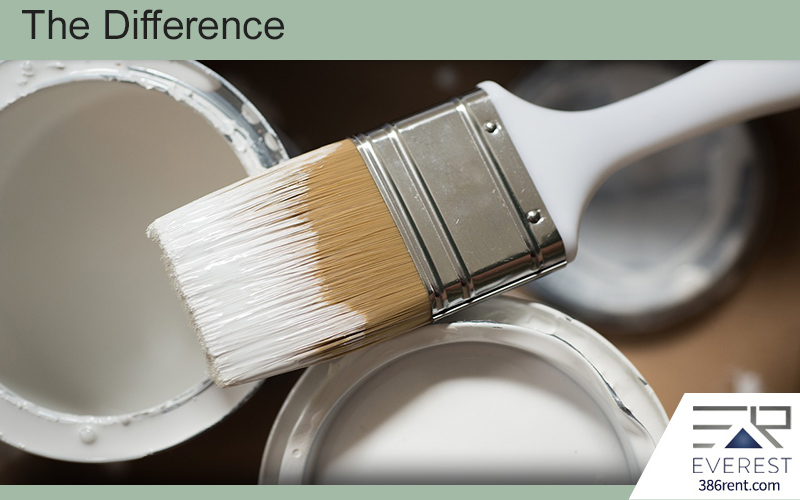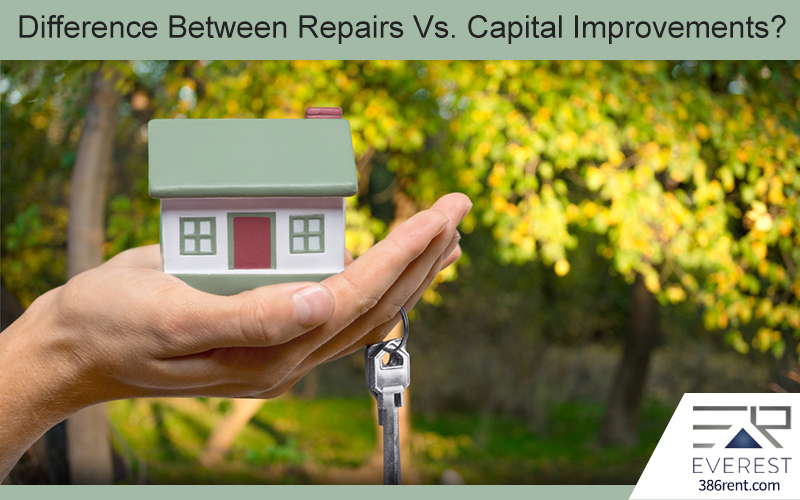As a property manager, owner, or landlord, you have many decisions to make once your property is in service. One such decision is determining whether each maintenance or repair bill should be classified as a regular expense or a capital improvement. As a landlord, you are entitled to few tax deductions; these helps increase the ROI and profit. However, ATO has tightened the nose on rental owners who made false claims to enjoy the tax benefits.
The biggest mistake most landlords make is the wrong classification of repairs, maintenance, and capital improvements. Treating these expenses as tax deductions can become very difficult if they are not classified right. Read along to know the difference between these expenses and how best to classify repairs, maintenance, and capital improvements.
Why It’s Important to Differentiate and Classify?
To keep your rental habitable and up to date, every landlord must take care of regular maintenance and repairs. For example, a faulty AC unit, broken pipes, or leakages are part of regular maintenance. For a manager or a landlord managing the property, these should be in the job description.
Compared to maintenance and repairs, capital improvements both increase the value of the property as well as extends its lifespan. Therefore, such improvements are classified under capital expenditures (CapEx). Here is the catch, it’s an old trick to classify the work done on the property to improve its upkeep as repair and maintenance, and this is done to maximize landlord tax deductions. This sounds like a good plan, but unwise tax deduction claims are no one’s friend, they do more harm than good, and a smart landlord would stay away from such mistakes. Being honest and understanding the difference between repairs versus improvements will help you avoid any trouble with IRS. Let us dig in, shall we?
The Difference Between Repairs, Maintenance, And Capital Improvements:

While updating your rental property, the adjustments you make are either doing to be termed as repairs/maintenance or improvements. Here is how you can differentiate between the lot.
Maintenance:
Any job that is to prevent degeneration or damage comes under maintenance. Standard maintenance on a property is simple to understand; it is regular work to keep the place tidy, habitable, and functional. For example, removing to installing anything that past its prime comes under maintenance, whereas anything that goes beyond this definition is considered as repair. Seasonal servicing of the gadgets installed around the property comes under maintenance.
Repairs:
Compared to maintenance, repairs are to fix all damaged and deteriorated installations. Repair work does not increase the value of the property; it brings the property to its original value. However, damages like structural damages are not repairs. They are replacements. For example, hiring an HVAC professional to fix your central air conditioning comes under repairs and not maintenance.
Capital Improvements:
Anything above and beyond maintenance and repairs is classified as Capital Improvements. Anything that improves and accelerated the value of your property is termed Capital Improvements. To change the original layout, adding an extension, or installing a sunroof to attract better buyers and renters is classified as Capital Improvements. Apart from accelerating the value f the property, Capital Improvements are known to extend the life of the property as well. Any kind of remodeling or renovations is known as adding an extension or installing a sunroof to attract better buyers and renters, is classifies as Capital Improvements as it increases the curb appeal, the value of the property, and attracts better buyers and renters.
To put it simply, anything that reinstates or restores the actual value of your property repairs, whereas anything that increases the lifespan and value of your property is Capital Improvement.
Capital improvements cannot be termed as maintenance, but both maintenance and repairs can be termed as Capital improvements as with extensive damage replacement both increases the value and the lifespan of the property.
For example, when buying a fixer-upper, the investor follows Rehab, Rent, Refinance, Repeat, BRRRR. He depreciates the initial renovation costs, adds them to the rental property cost to reduce capital.
Understanding The Types of Capital Expenditures:
The following are the types of Capital Expenditures:
Improvements: Improvement is when you are upgrading the property’s condition. For example, if you are making changes to adapt the property as a rental or an office, such improvement will come under Capital Expenditures. Property restoration is also an improvement. There is a subcategory of improvement that is known as adaptation. This is when your use the property as something else than what you originally bought it for.
Betterments:
To upgrade the condition of the property, adding value by making it stronger and improving the quality of living, i.e., adding more space or modernizing it, is called betterment. Likewise, fixing flaws or extending the property is also betterment.
Restoration:
Buying a fixer-upper or a damaged property, restoring it to its original glory is also capital expenditure. Rebuilding a substantial amount or fixing more than have comes under restoration.
How Tax Is Affected by Repairs Vs. Improvements:
The deduction of cost is why you need to learn and understand the difference between repairs and improvements. You can 100% of the costs of repairs and maintenance, but you cannot do the same to capital expenditures in the same year it occurred. All capital expenditures depreciate over time. For a simple landlord, these rules are hard to understand. To be on the safe side, hire an accountant to keep your books neat and tidy and help you record all expenses for tax filing.
These are the basics of Repairs, Maintenance, and Capital Improvements all landlords should know. Knowing how to categorize these can help you minimize blunders regarding tax filing and avoids any trouble with IRS. There is a grey area where the definition gets a bit blurry when it comes to repair and improvements. For example, repairing a broken window is repairs but replacing or revamping all widows to improve the property and increase the lifespan is an improvement.
If you’d like to talk more about property management, or you need help with Everest Property Management, please contact us at Everest Realty.




 As a top producing Realtor and Property Manager; Terry specializes in sales, extensive construction homes, rentals, REO’s, short sales, and all aspects of Real Estate. After graduating the University of Michigan with a master in MBA, Terry continued his endeavor and now has over 15+ years of experience in the Real Estate world. If there is anything that has to do with Real Estate and sales, you can always be sure of Terry to provide important, specialized knowledge.
As a top producing Realtor and Property Manager; Terry specializes in sales, extensive construction homes, rentals, REO’s, short sales, and all aspects of Real Estate. After graduating the University of Michigan with a master in MBA, Terry continued his endeavor and now has over 15+ years of experience in the Real Estate world. If there is anything that has to do with Real Estate and sales, you can always be sure of Terry to provide important, specialized knowledge.




